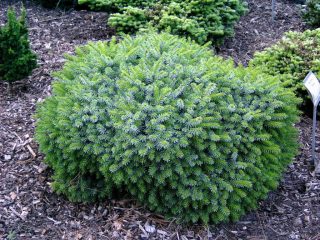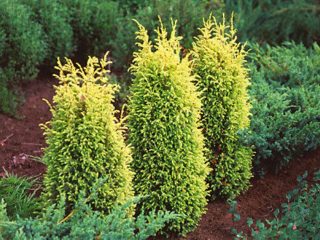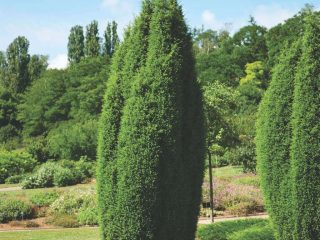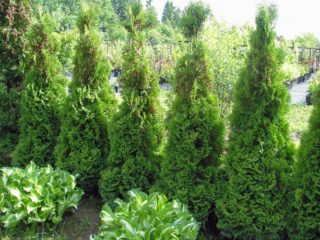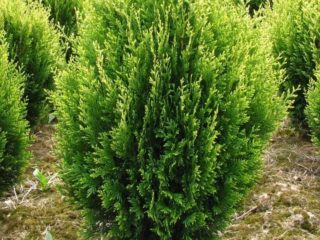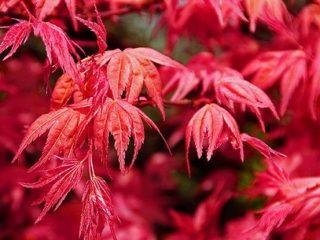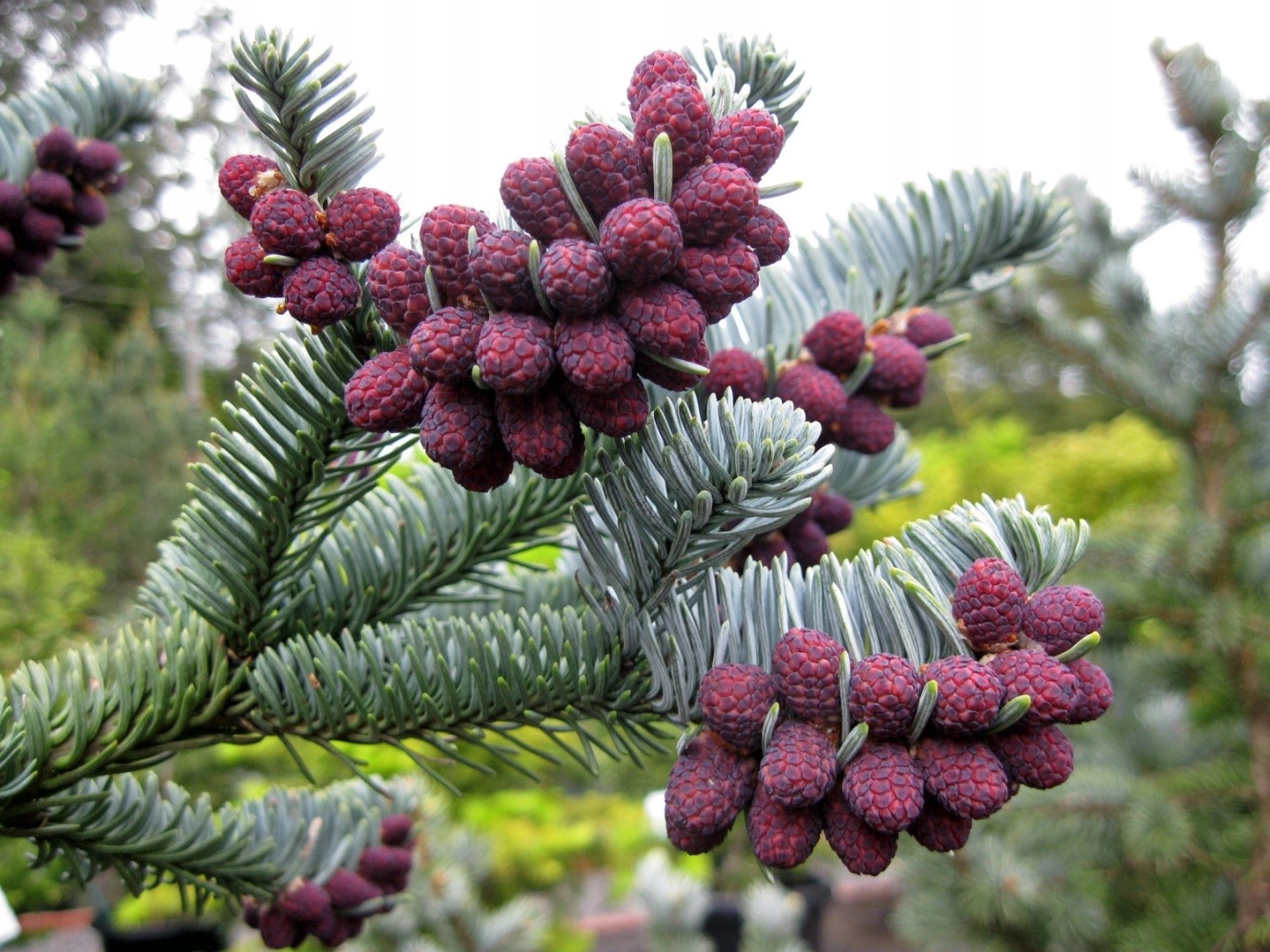Content
Silver acacia is an evergreen tree from the legume family. It is distinguished by a lush crown, numerous yellow flowers and beautiful silver-green leaves. Blooms earlier than most other plants. At the same time, the crop can be cultivated in open ground only in the south. The basic rules of planting and care are described in more detail in this article.
Characteristics and description
Silver acacia (Acacia dealbata), also called whitewashed, is a species of tree from the genus of the same name. This is an evergreen plant that can grow up to 12 m. At the same time, the growth rate is quite high, especially in young trees.
The barrel is not very thick, but quite strong. Like the branches, it is covered with gray-brown or brown bark. There are many shallow cracks visible on the surface. It is through them that the gum emerges and then hardens, which has medicinal properties.
Young shoots are not covered with bark, the color is dark green with an olive tint. The leaves of silver acacia are arranged alternately, the shape is complex - doubly pinnately dissected. The total length reaches from 10 to 20 cm. Each leaf consists of several pairs of leaf plates (from 8 to 24).
They have an elongated shape and are small in size. At the same time, the color is gray-green, which is why acacia is called silver. The characteristic shape of the leaves gives it an external resemblance to a fern. At the base of the leaf blade there is a main petiole, it is partly swollen.
The flowers of silver acacia are grayish-yellow, rather small, but numerous. They are united into inflorescences in the form of spherical heads (20-30 each). They are quite small in size, spherical in shape, reaching 4-8 mm in diameter. The heads, in turn, are combined into brushes, and these into panicles.
If you look closely, you can see numerous free-type stamens. They are attached with long orange-yellow threads. The pistils have a single-locular ovary and a long style. Silver acacia flowers are fragrant and give a pleasant herbaceous aroma.
When grown in warm conditions, the flowering of the tree begins in the second half of February and continues until the end of April. At the end of summer, numerous fruits form in place of wilted inflorescences. They are quite large beans (reach from 1.5 to 8 cm in length, about 1 cm in width).

The flowers of the plant are small but numerous
The shape is elongated-lanceolate, the color is purple with a brown tint. Each bean produces hard seeds that are dark brown or almost black in color. They are flat and round in shape, have a matte surface, and are only 4 mm long.
Homeland of silver acacia
Silver acacia grows naturally in southeastern Australia and on the island of Tasmania. Initially, it was found only here, but already in the 19th century. was brought to other countries, including Russia.
Where does silver acacia grow?
Silver acacia is found in southern European countries, southern Africa and the nearest islands (Azores, Madagascar). The culture was introduced to the western United States. In Russia, it is grown only on the Black Sea coast (in the regions of the North Caucasus). The tree began to be cultivated here in 1852.
Frost resistance of silver acacia
One of the main questions that arises among summer residents planning to grow silver acacia in the Moscow region and other regions is related to the frost resistance of the tree. The culture is unpretentious and takes root quite well even on depleted soil. However, acacia is heat-loving, and can freeze strongly even at -10 degrees. Therefore, in most regions of Russia, cultivation in open ground is impossible.
Medicinal properties of silver acacia
Silver acacia is used not only for decorative purposes, but also for medicinal purposes. Moreover, in folk medicine they use tree bark and gum solution (plant sap that is released due to damage to the surface).
It includes:
- tannins;
- arabine (used for the synthesis of gum arabic);
- cellulose;
- glycosides;
- potassium;
- manganese;
- sodium;
- magnesium;
- phosphorus;
- essential oils;
- flavonoids.
Due to its rich chemical composition, silver acacia is used to treat various pathologies:
- ulcers in the gastrointestinal tract;
- heat;
- inflammatory processes;
- problems with blood clotting;
- stagnation of sputum (used for expectoration);
- poor sleep;
- stool disorders;
- swelling;
- irritation of the gastrointestinal mucosa due to the absorption of drugs.
Advantages and disadvantages
Silver acacia is a beautiful, tall, but at the same time demanding tree. However, it has quite a lot of advantages that are noted by both experienced and novice gardeners.

Tree in flowering period
Pros:
- a lot of flowers;
- fast growth rates;
- beautiful crown;
- graceful leaves;
- pleasant aroma;
- the buds open already at the end of February;
- undemanding to soil.
Minuses:
- very low frost resistance (up to -10 degrees);
- it is necessary to water well;
- Stable lighting is required.
How to distinguish silver acacia from mimosa
It is widely believed that on March 8, yellow flowers given to girls are called mimosas. Few people know that this is actually silver acacia, which has quite a few differences from mimosa. The latter is a low-growing flower of lilac-pink shades. Mimosa never produces yellow flowers, although it belongs to the same legume family. This explains the similar shape of the leaves.
Thus, the differences between silver acacia and mimosa are quite obvious - although they are similar plants, they produce different inflorescences. However, many people still believe that they are giving or receiving a mimosa as a gift, although it is an acacia tree. It blooms earlier than many other plants, “making it” just in time for the spring holiday of March 8th.
How to grow silver acacia
In most regions of Russia, it is possible to grow silver acacia only in a greenhouse, a spacious greenhouse or in containers, transferring it to a relatively warm place for the winter. Only in the southern regions, where even in December-January the temperature does not reach -10 degrees, is planting in open ground allowed.
In this case, planting is planned for April, selecting a well-lit (without shadow) and moderately moist (not in a low-lying) place. It is also better to plant in a greenhouse or in a pot in early spring. To do this, it is recommended to prepare fertile soil, for example, with the following composition (ratio 4:2:1:1):
- leaf soil;
- turf soil;
- sand;
- humus.
The prepared soil is poured into a hole or into a sufficiently large container (it is necessary that the roots of the silver acacia seedling are located freely). Next, the soil is slightly compacted and watered with settled water.

Acacia should be grown in well-lit areas.
Rules of care
Silver acacia is unpretentious to the soil, but is demanding on the level of watering, temperature conditions and lighting. Therefore, when leaving, you must follow several rules:
- Water the plant quite often, but moderately. It is worth making sure that the surface layer of soil has time to dry out. As a rule, young acacias are watered 2 times a week if there is no rain outside. Mature trees are watered no more than once every 10 days.
- After each watering, it is advisable to loosen the soil. It is also extremely important to remove weeds because otherwise the silver locust will not grow fast enough.
- Another important rule of care is feeding. It is applied regularly, starting in April and ending in mid-August. Fertilizers are given once every 20 days in spring and autumn. In summer, it is enough to feed only once every 30 days.It is advisable to alternate complex mineral fertilizers with organic ones.
- One of the most important rules of care when growing silver acacia in a pot is annual replanting into a larger container. The procedure begins in the spring. All damaged roots are cut off and the tree is transplanted into a new pot 5-7 cm wider than the previous one.
- Every spring, silver acacia needs to be pruned to remove overgrown and diseased branches. In September, formative pruning is done, removing weak shoots that protrude beyond the general contour.
- In all regions except the south of Russia, silver acacia must be transferred to a moderately cool room for the winter and grown at a temperature of 5-10 degrees Celsius. It is important to ensure that the plant receives maximum light. If necessary, lighting should be arranged with phytolamps and diodes.
Reproduction methods
Silver acacia is propagated in two main ways - by growing from seeds and cuttings. Moreover, the second option is much simpler, so it is more common among gardeners.

The easiest way to propagate the plant is from cuttings.
Propagation of silver acacia by seeds
You can collect the seeds yourself and get seedlings by starting work in mid-January. The step-by-step instructions are as follows:
- Soak the grains in hot (but not scalding) water for two days.
- Prepare a fertile mixture and place in shallow containers.
- Bury the seeds 0.5 cm.
- Cover with film and place in a well-lit place.
- Water regularly - after three weeks shoots will appear.
Cuttings of silver acacia
Young and adult silver acacias can be propagated by cuttings. In the spring, green shoots 10 cm long are cut and then proceed as follows:
- Make an oblique lower cut, remove all the leaves by half.
- Place it overnight in a solution of a growth stimulator, for example, Epin.
- Planted in fertile soil and covered with a transparent jar.
- Place the container in a warm and well-lit place, regularly water and ventilate.
- After three months, they are transferred to a regular pot (in the south they can be planted in open ground and mulched).
How fast does silver acacia grow?
One of the distinctive features of silver acacia is its rapid growth rate. They depend mainly on the climatic conditions of the area:
- average annual temperature;
- minimum temperature in winter;
- illumination level (total amount of sunlight).
The pace partly depends on care, but the decisive factor is still climate. Young seedlings in the south (for example, regions of the North Caucasus) grow 1 m per year or more.
If you grow silver acacia in the middle zone, then even if you follow all the rules of care, it will grow by less than 1 m per year. After reaching the age of ten, the rate begins to decrease, but not immediately, but gradually. That is why the tree usually reaches a maximum height of 10-12 m.
Conclusion
Silver acacia is one of the most beautiful trees that produces pleasant yellow flowers, mistakenly called mimosas. In nature, it grows in warm countries, so it cannot withstand even short-term drops in temperature. However, it can be grown in almost any region if it is moved for the winter to a moderately cool and well-lit place.
